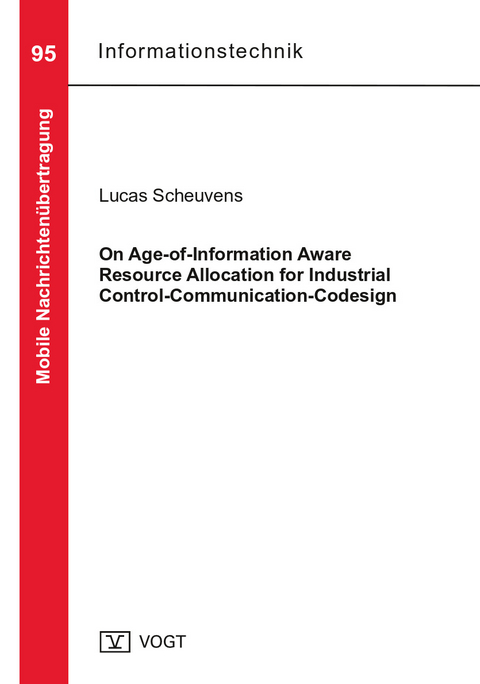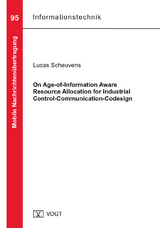On Age-of-Information Aware Resource Allocation for Industrial Control-Communication-Codesign
Seiten
- Titel nicht im Sortiment
- Artikel merken
In industrial manufacturing, Industry 4.0 refers to the ongoing convergence of the real and virtual worlds, enabled through intelligently interconnecting industrial machines and processes through information and communications technology. Ultra- reliable low-latency communication (URLLC) is widely regarded as the enabling technology for Industry 4.0 due to its ability to fulfill highest quality-of-service (QoS) comparable to those of industrial wireline connections. In contrast to this trend, a range of works in the research domain of networked control systems have shown that URLLC’s supreme QoS is not necessarily required to achieve high quality-of- control; the co-design of control and communication enables to jointly optimize and balance both quality-of-control parameters and network parameters through blurring the boundary between application and network layer. However, through the tight interlacing, this approach requires a fundamental (joint) redesign of both control systems and communication networks and may therefore not lead to short-term widespread adoption. Therefore, this thesis instead embraces a novel co-design approach which keeps both domains distinct but leverages the combination of control and communications by yet exploiting the age of information (AoI) as a valuable interface metric.
This thesis contributes to quantifying application dependability as a consequence of exceeding a given peak AoI with the particular focus on packet losses. The benefi- cial influence of negative temporal packet loss correlation on control performance is demonstrated by means of the automated guided vehicle use case. Assuming small-scale fading as the dominant cause of communication failure, a series of communication failures are mapped to an application failure through discrete-time Markov models for single-hop (e.g, only uplink or downlink) and dual-hop (e.g., subsequent uplink and downlink) architectures. This enables the derivation of application-related dependability metrics such as the mean time to failure in closed form. For single-hop networks, an AoI-aware resource allocation strategy termed state-aware resource allocation (SARA) is proposed that increases the application reliability by orders of magnitude compared to static multi-connectivity while keep- ing the resource consumption in the range of best-effort single-connectivity. This dependability can also be statistically guaranteed on a system level – where multiple agents compete for a limited number of resources – if the provided amount of resources per agent is increased by approximately 10 %. For the dual-hop scenario, an AoI-aware resource allocation optimization is developed that minimizes a user-defined penalty function that punishes low application reliability, high AoI, and high average resource consumption. This optimization may be carried out offline and each resulting optimal SARA scheme may be implemented as a look-up table in the lower medium access control layer of future wireless industrial networks.
| Erscheinungsdatum | 31.08.2022 |
|---|---|
| Sprache | englisch |
| Maße | 148 x 210 mm |
| Einbandart | Paperback |
| Themenwelt | Technik ► Elektrotechnik / Energietechnik |
| Schlagworte | Industrie 4.0 • Mobilfunk • URLLC |
| ISBN-10 | 3-95947-055-X / 395947055X |
| ISBN-13 | 978-3-95947-055-1 / 9783959470551 |
| Zustand | Neuware |
| Haben Sie eine Frage zum Produkt? |
Mehr entdecken
aus dem Bereich
aus dem Bereich
DIN-Normen und Technische Regeln für die Elektroinstallation
Buch | Softcover (2023)
Beuth (Verlag)
86,00 €
Kolbenmaschinen - Strömungsmaschinen - Kraftwerke
Buch | Hardcover (2023)
Hanser (Verlag)
49,99 €




